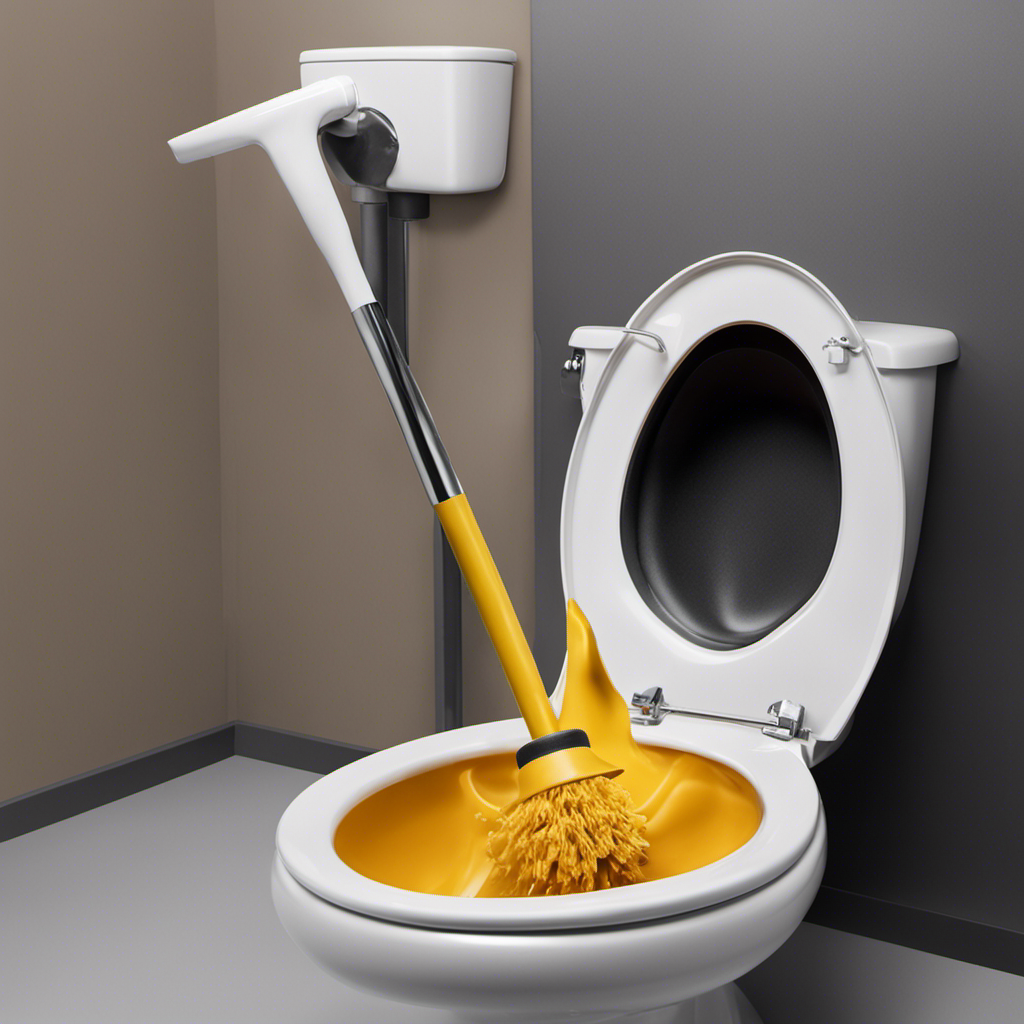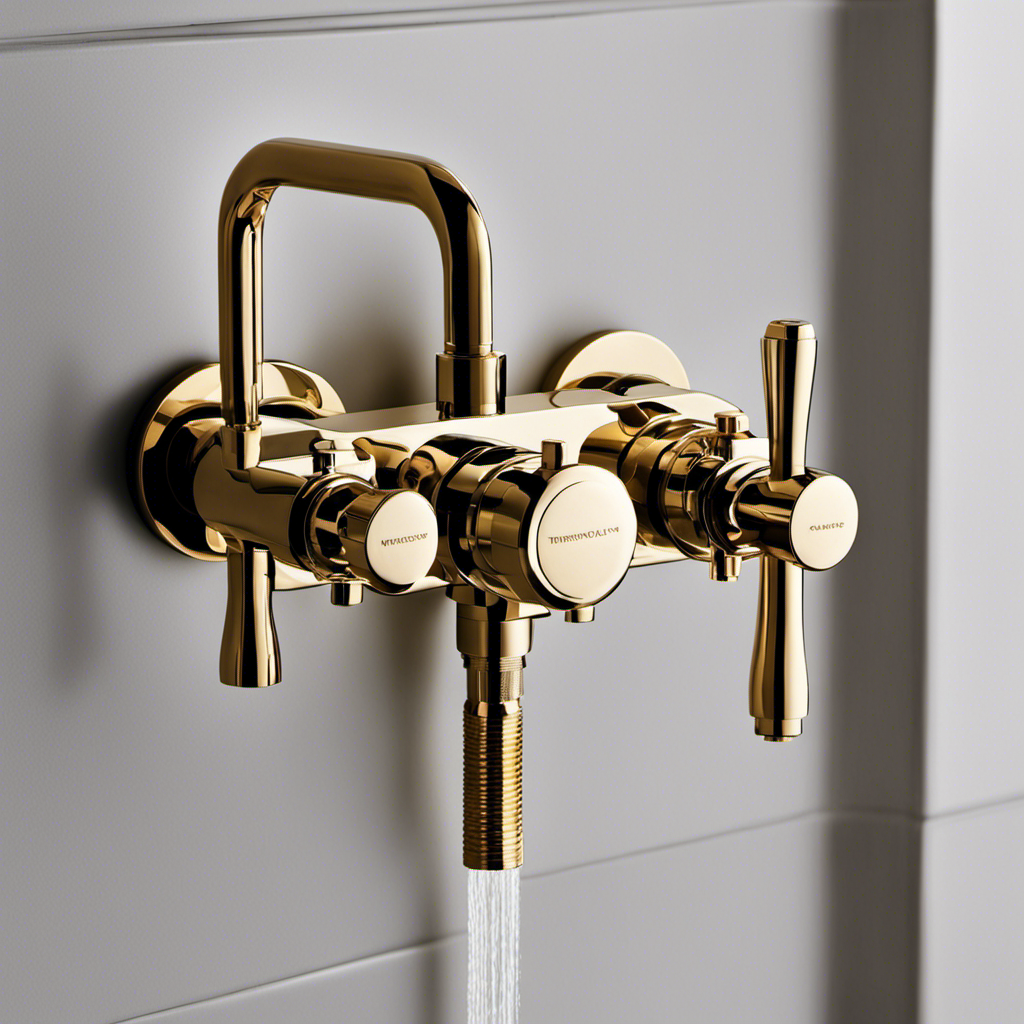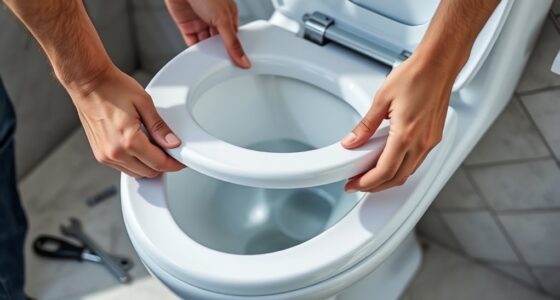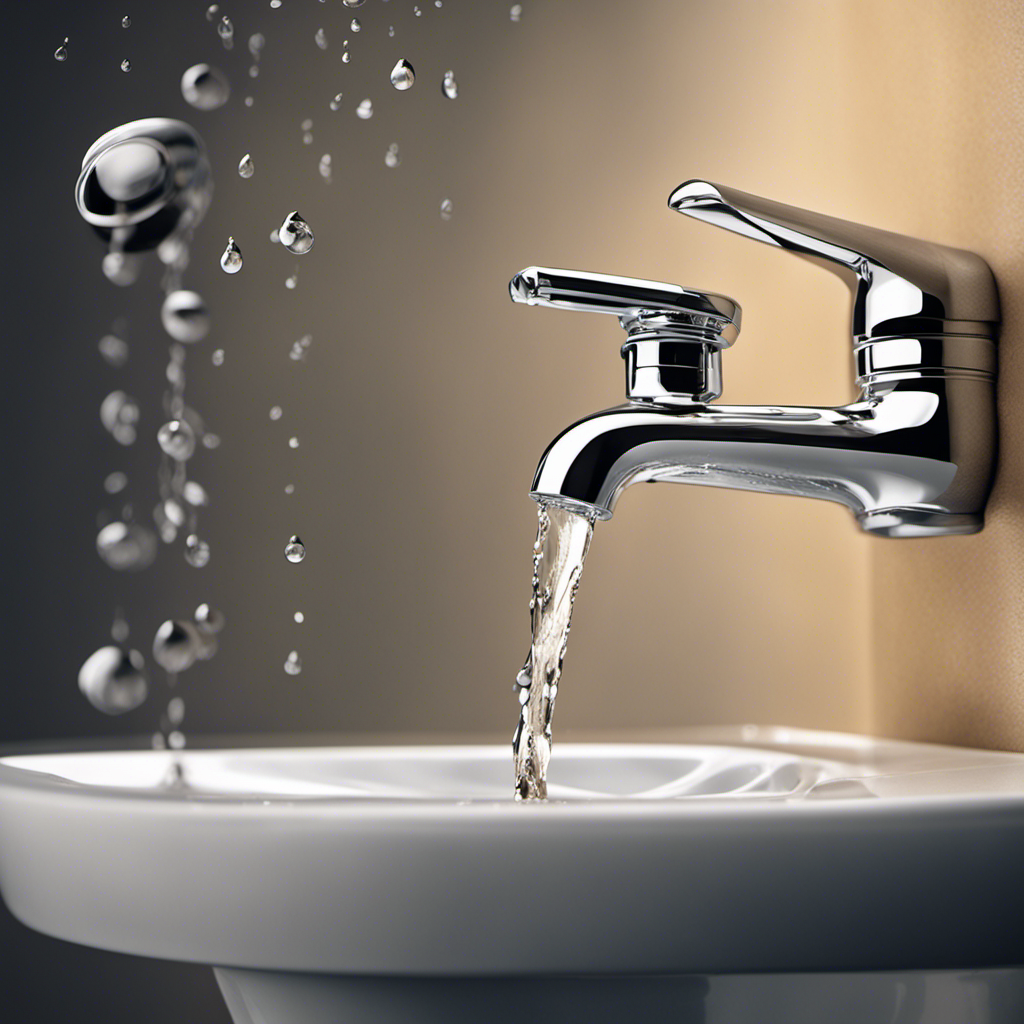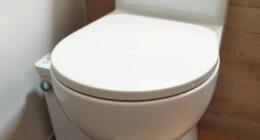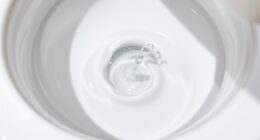As someone who has dealt with stubborn mineral deposits in my own toilet, I understand the frustration they can cause.
But fear not! In this guide, I will share my tried-and-true methods for removing these pesky deposits and restoring your toilet to its former glory.
With just a few simple tools and some elbow grease, you’ll be able to tackle this problem head-on and prevent future buildup.
So let’s dive in and say goodbye to those unsightly stains once and for all!
Key Takeaways
- Mineral deposits in toilets are caused by hard water containing minerals like calcium and magnesium.
- Signs of mineral deposits include brown or yellow stains, rough texture, and decreased water flow.
- Mineral deposits can cause blockages, affect the flushing mechanism, and harbor bacteria and germs.
- Regular cleaning and maintenance using natural cleaning solutions can prevent mineral deposits and keep the toilet in optimal condition.
Understanding Mineral Deposits in Toilets
To understand why you’re dealing with stubborn mineral deposits in your toilet, it’s important to learn about the composition of these deposits.
Mineral deposits in toilets are typically caused by the presence of hard water. Hard water contains high levels of minerals such as calcium and magnesium, which can accumulate over time and create a buildup in the toilet bowl and pipes.
These deposits not only look unsightly but can also cause blockages and affect the flushing mechanism of the toilet. Additionally, mineral deposits can harbor bacteria and germs, posing potential health risks.
Identifying the signs of mineral deposits is crucial in order to address the issue effectively and prevent further damage to your toilet.
Identifying the Signs of Mineral Deposits
Identifying the signs of mineral deposits can help determine the necessary cleaning methods for your toilet. Mineral deposits in toilets are often caused by hard water, which contains high levels of minerals like calcium and magnesium. These minerals can build up over time, creating unsightly stains and affecting the functionality of your toilet. Common signs of mineral deposits include brown or yellow stains, a rough texture on the toilet surface, and decreased water flow. Ignoring these signs can lead to further issues such as clogged pipes and reduced flushing efficiency. It’s important to address mineral deposits promptly to avoid potential health risks. While mineral deposits themselves aren’t typically harmful, they can create an environment where bacteria and other pathogens can thrive, posing a risk to your health. Regular cleaning and maintenance can help prevent these issues and keep your toilet in optimal condition.
| Common Causes | Health Risks | Cleaning Methods |
|---|---|---|
| Hard water | Bacterial growth | Vinegar and baking soda |
| Mineral-rich water sources | Reduced flushing efficiency | Commercial cleaning products |
| Infrequent cleaning | Clogged pipes | Scrubbing with a toilet brush |
Tools and Materials Needed for Removing Mineral Deposits
Regular cleaning and maintenance can help you avoid potential health risks caused by mineral deposits in your toilet. When it comes to removing these deposits, there are several tools and materials you’ll need.
Firstly, you’ll need a toilet brush to scrub away the deposits. Make sure it has stiff bristles to effectively remove the buildup.
Additionally, you’ll need cleaning solutions to aid in the process. There are various commercial cleaning solutions available that are specifically designed to tackle mineral deposits. However, if you prefer natural alternatives, you can opt for vinegar or lemon juice mixed with water. These acidic solutions can effectively dissolve the deposits without the use of harsh chemicals.
Step-by-Step Guide to Removing Mineral Deposits
When tackling the task of removing mineral deposits from your toilet, it’s important to start by gathering the necessary tools and materials. Here is a step-by-step guide on how to effectively remove mineral deposits from your toilet:
- Vinegar: Vinegar is a natural cleaning solution that can help dissolve mineral deposits.
- Baking Soda: Baking soda can be used to scrub away stubborn stains and residue.
- Toilet Brush: A toilet brush with stiff bristles will help scrub away the deposits.
- Rubber Gloves: Rubber gloves will protect your hands from any harsh chemicals.
- Empty Spray Bottle: Fill the spray bottle with vinegar to easily apply it to the affected areas.
To begin, pour vinegar into the spray bottle and spray it onto the mineral deposits. Let it sit for a few minutes to allow the vinegar to break down the deposits.
Then, sprinkle baking soda onto the stains and scrub them away with the toilet brush. Rinse the toilet thoroughly with water.
To prevent future deposits, consider using natural cleaning solutions regularly and maintaining a cleaning schedule.
Preventing Mineral Deposits in the Future
To avoid future buildup, it’s important to regularly clean your toilet using natural cleaning solutions and maintain a cleaning schedule. By implementing a few simple habits, you can prevent mineral deposits from forming and keep your toilet looking and functioning its best. Here are some natural ways to prevent future buildup:
| Natural Cleaning Solution | Cleaning Frequency |
|---|---|
| Vinegar | Once a week |
| Baking Soda | Once a month |
| Lemon Juice | Every two weeks |
| Borax | Every three months |
| Hydrogen Peroxide | Every six months |
These natural cleaning solutions work effectively to dissolve minerals and prevent them from clinging to the toilet bowl. Regular maintenance will not only keep your toilet looking clean and fresh, but it will also extend its lifespan and reduce the need for harsh chemical cleaners. Remember to always follow the manufacturer’s instructions and guidelines when using any cleaning products.
Frequently Asked Questions
Can I Use Bleach to Remove Mineral Deposits From My Toilet?
Yes, you can use bleach to remove mineral deposits from your toilet. Bleach is effective in breaking down and removing mineral buildup, making your toilet clean and shiny.
How Often Should I Clean My Toilet to Prevent Mineral Deposits From Building Up?
To prevent mineral deposits from building up in my toilet, I clean it regularly. I find that cleaning it at least once a week keeps it looking fresh and prevents any buildup from occurring.
Are Mineral Deposits in Toilets Harmful to My Health?
Mineral deposits in toilets can pose health risks if not properly removed. Prevention methods include regular cleaning with vinegar or a mild acid cleaner, scrubbing with a toilet brush, and using a water softener.
Can I Use Vinegar as an Alternative to Commercial Cleaning Products for Removing Mineral Deposits?
I find that vinegar is a highly effective alternative to commercial cleaning products for removing mineral deposits. It can dissolve the deposits and leave the toilet clean and fresh without the use of harsh chemicals.
Is It Necessary to Remove the Toilet Bowl in Order to Effectively Clean Mineral Deposits?
It’s not necessary to remove the toilet bowl to clean mineral deposits. There are effective methods using vinegar or commercial cleaning products that can dissolve and remove the deposits without the need to dismantle the toilet.
Conclusion
To conclude, removing mineral deposits from your toilet is a task that requires patience and the right tools.
By understanding the signs of mineral deposits and following a step-by-step guide, you can restore your toilet to its former glory.
Remember, prevention is key, so be sure to regularly clean your toilet and use a water softener to avoid future buildup.
With a little elbow grease, you can say goodbye to those stubborn mineral deposits and keep your toilet sparkling clean.
It’s time to flush away the problem and start fresh!

